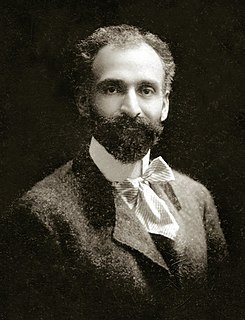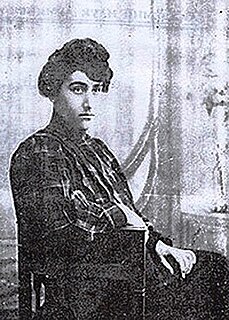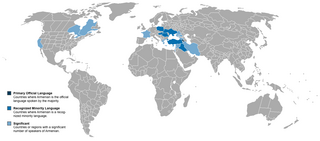This page is based on this
Wikipedia article Text is available under the
CC BY-SA 4.0 license; additional terms may apply.
Images, videos and audio are available under their respective licenses.

Saint Gregory the Illuminator is the patron saint and first official head of the Armenian Apostolic Church. He was a religious leader who is credited with converting Armenia from paganism to Christianity in 301. Armenia thus became the first nation to adopt Christianity as its official religion.

The Armenian Genocide, also known as the Armenian Holocaust, was the Ottoman government's systematic extermination of 1.5 million Armenians, mostly citizens within the Ottoman Empire. The starting date is conventionally held to be 24 April 1915, the day that Ottoman authorities rounded up, arrested, and deported from Constantinople to the region of Ankara, 235 to 270 Armenian intellectuals and community leaders, the majority of whom were eventually murdered. The genocide was carried out during and after World War I and implemented in two phases—the wholesale killing of the able-bodied male population through massacre and subjection of army conscripts to forced labour, followed by the deportation of women, children, the elderly, and the infirm on death marches leading to the Syrian Desert. Driven forward by military escorts, the deportees were deprived of food and water and subjected to periodic robbery, rape, and massacre. Other ethnic groups were similarly targeted for extermination in the Assyrian genocide and the Greek genocide, and their treatment is considered by some historians to be part of the same genocidal policy. Most Armenian diaspora communities around the world came into being as a direct result of the genocide.

Isaac or Sahak of Armenia (354–439) was Catholicos of the Armenian Apostolic Church. He is sometimes known as "Isaac the Great," and as "Sahak the Parthian" owing to his Parthian origin.

Hovhannes Tumanyan was an Armenian poet, writer, translator, literary and public activist. He is considered the national poet of Armenia.
Khosrov III Kotak was a Prince who served as a Roman Client King of Arsacid Armenia.

Van cats are a distinctive landrace of domestic cat, found in the Lake Van region of eastern Turkey. They are relatively large, have a chalky white coat, sometimes with ruddy coloration on the head and hindquarters, and have blue or amber eyes or are odd-eyed. The variety has been referred to as "the swimming cat", and observed to swim in Lake Van.

Shushanik Kurghinian was an Armenian writer who became a catalyst in the development of socialist and feminist poetry. She gave voice to the voiceless and saw her role as a poet as profoundly political.

Armenians in Israel are Armenians living in Israel, some of whom hold Israeli citizenship.
Saint Aristaces also known as Aristakes was assigned by St. Gregory I the Enlightener as the next Armenian Catholicos in line of Armenia's Holy Apostolic Church, to stabilize and continue strengthening Christianity not only in Armenia, but also in the Caucasus Albania and Anatolia. He was the second son of St. Gregory I the Enlightener to his wife Miriam and his older brother was Vrtanes. At the time, the position was hereditary and assigned to the Parthian dynasty.
Saint Husik I, often known as Husik was a Catholicos of Armenia's Holy Apostolic Church who lived in the fourth century. He was the fourth in line of then of the Parthian Catholicoi immediately after Gregory the Illuminator, St. Aristaces I and St. Vrtanes I.
Daniel I of Armenia was a Syrian who became Catholicos in Armenia's Holy Apostolic Church after the reign of four hereditary Parthian catholicoi (St. Gregory I the Enlightener, his son St. Aristaces I, St. Vrtanes I and St. Husik I. He ruled symbolically less than one year in 347 AD and was succeeded by Pharen I of Armenia of the Ashishatts Dynasty.
Grigoris was the Catholicos of the Church of Caucasian Albania ca. 325–330 AD. He is considered a saint martyr by the Armenian Apostolic Church.
Papazyan is a surname of Armenian origin.
The Armenian Revolutionary Federation (ARF), has a long history in Iran, dating back to the earliest days of the party, in the 1890s. The ARF played a significant role as one of the pioneers in the development of early modern Iranian politics, and had a great contribution to the Iranian Constitutional Revolution. Though the principal objectives of the ARF were to create an independent Armenian state comprising territory of the former Soviet Union and the Turkey, it has never asserted claims to the portion of historical Armenian land that remain under Iranian rule. It is the only Armenian party to exist in Iran.
Avet Avetisyan was a Soviet and Armenian film actor.









